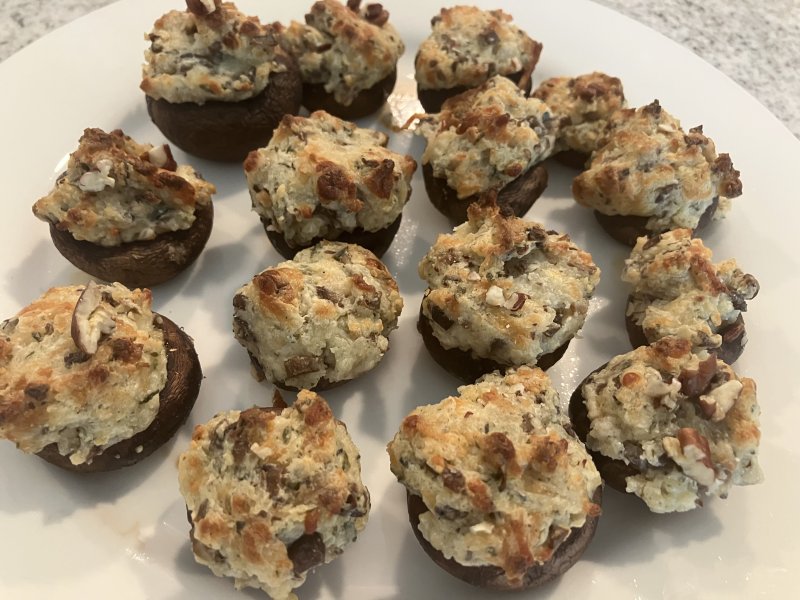Mushrooms come into the spotlight for summer entertaining
I made a stop at the mushroom tent during last week’s Historic Lewes Farmers Market, collecting a box of cremini mushrooms. Cremini mushrooms (often spelled "crimini") can be found in the grocery labeled as “baby bellas,” hinting at their connection to portobello mushrooms. Botanically, they are the same varietal of mushroom as white mushrooms and portobellos, the only difference being their different stages of maturity.
Also referred to as “brown mushrooms,” cremini have a deeper, earthier taste and firmer texture than white button mushrooms. Because their stems can sometimes be tough or chewy, most preparations have you separate the cap as you would with a shiitake mushroom. Since cremini are sturdy and not as full of moisture as the white buttons, they stand up better in certain dishes, such as the stuffed caps in the photo.
Mushrooms are one of those foods about which I wonder: Who was the first to try eating them? According to the Max Planck Institute for Evolutionary Anthropology, evidence of mushroom spores has been identified on tooth fragments found in a Spanish cave that dates to the Paleolithic Era. Flash forward to our ancient Greek and Roman ancestors, who used mushrooms for both medicinal and dietary applications that persist through today.
The answer to who was first is likely to be someone who keenly observed which plants were being consumed by animals in their local habitat. There was bound to be some trial and error, since some mushroom species are known to be poisonous, while others can cause hallucinatory effects. That’s why I have never tried to forage for wild mushrooms, as many types of dangerous fungi closely resemble their safe cousins.
Wild mushrooms typically grow in shady places, where there is plenty of decaying organic matter. You’ll find them on manure in a field or in a lawn enjoying dead plant roots. Some grow in leaf litter under trees, and some have a symbiotic relationship with the tree, growing on the outer bark. As some of you may know, our neighbors in Pennsylvania are the leading producers of mushrooms in this country.
Commercial mushrooms are grown indoors in an environment controlled for ideal temperature, light and humidity. Mushroom spores are mixed into a sterilized substrate material which can be made of straw or sawdust that has been treated with peat and lime. Precise moisture, heat and ventilation are all key to successfully growing the fungi, which need to be harvested in a timely fashion so they don’t begin to rot.
Once you have your mushrooms, regardless of the type, you will want to clean them. The best way is to use a soft-bristled mushroom brush to sweep off any pieces of dirt or growing medium. For those who insist on using water, consider a dampened piece of paper towel to address any clinging dirt. If you must rinse them, make it very brief and be sure to dry them off before cooking.
For the recipe in the photo, I chopped the stems into a very fine mince, discarding any that felt too woody or tough. These were sautéed in butter, mixed with breadcrumbs and spices, then folded into softened cream cheese. I’ve included this recipe, as well as one that adds sausage to the stuffing mixture for spicy flavor.
Creamy Stuffed Mushrooms
Sausage Stuffed Mushrooms*





















































